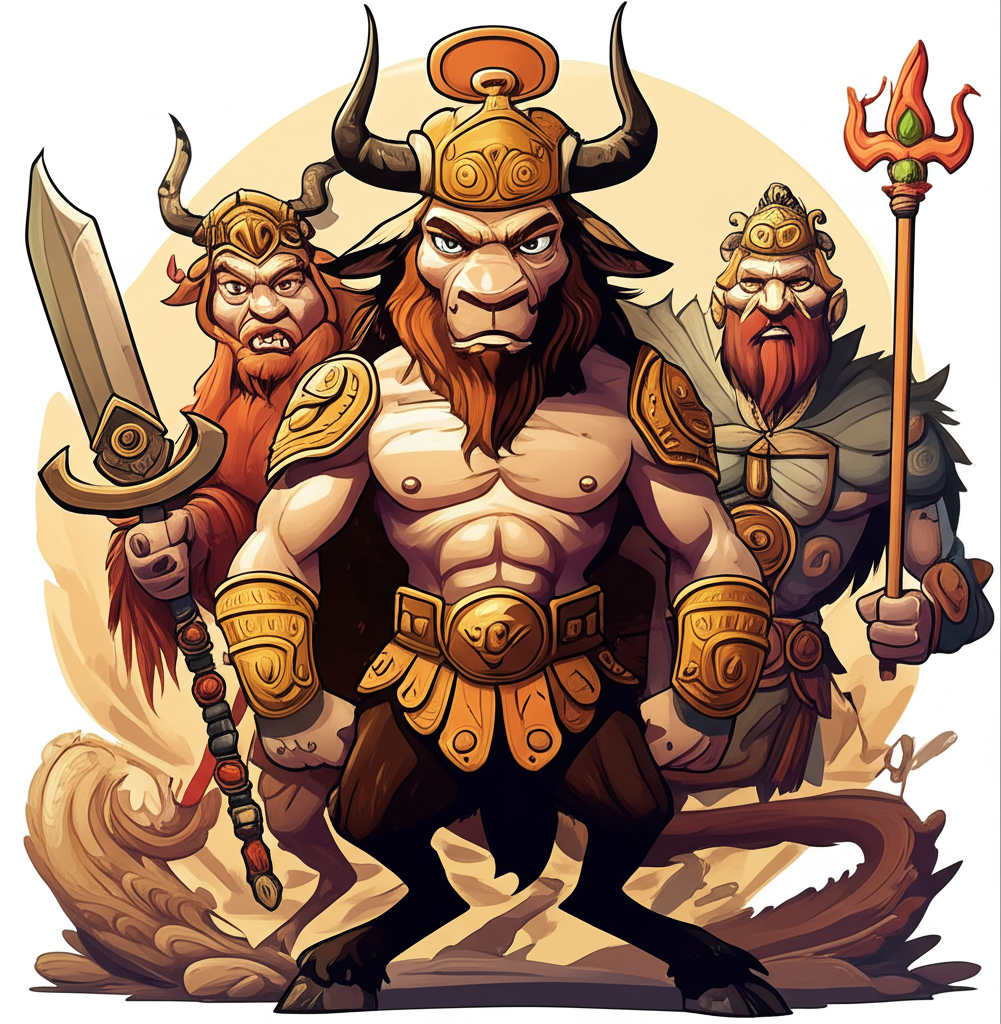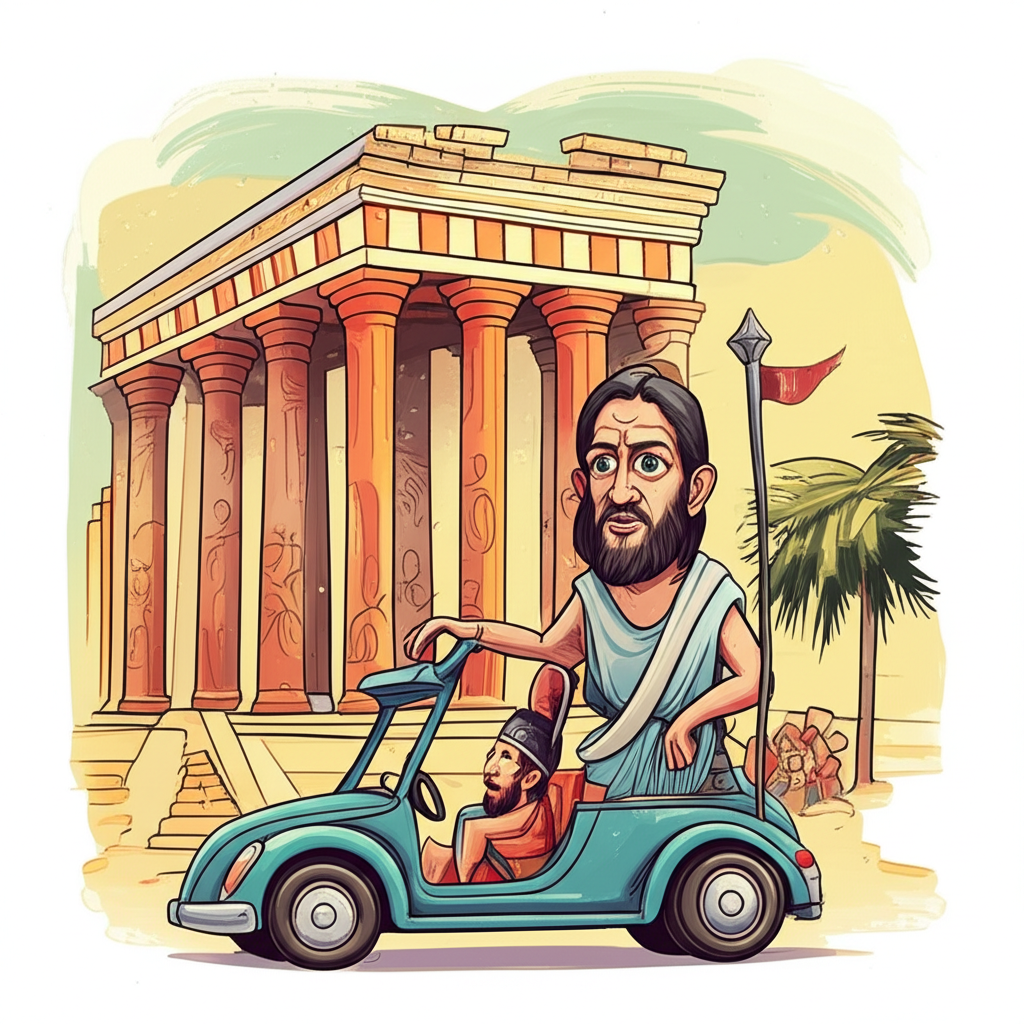
From the sun-drenched shores of the Aegean Sea, where the myths of ancient Greece still whisper on the wind, comes a tale that speaks of primal fears and the enduring human struggle against the monstrous. Among the many captivating narratives woven by the ancient Hellenes, the legend of the Minotaur, a creature inextricably linked to the labyrinthine heart of Crete, stands as a potent reminder of their worldview, their anxieties, and their enduring fascination with the unknown. It is crucial to understand that this is a traditional story, a product of the imagination and cultural understanding of people long past, not a factual account.
The era in which such myths flourished was one where the natural world was often perceived as a domain inhabited by powerful, often unpredictable forces. For the ancient Greeks, the cosmos was alive with gods, goddesses, and a menagerie of mythical beings who influenced human lives, dictated destinies, and embodied aspects of the world they experienced. Their understanding was shaped by the stark realities of their environment: the volatile sea, the awe-inspiring power of storms, the fertility of the land, and the ever-present threat of the wild. In this context, creatures like the Minotaur served as a powerful way to articulate complex ideas about human nature, the consequences of hubris, and the terrifying unknown that lay beyond the fringes of civilization.
The Minotaur, as depicted in these ancient narratives, is a creature of striking and unsettling imagery. It is a being of hybrid form, possessing the head and tail of a bull, and the body of a man. This duality, this unsettling fusion of beast and human, was not merely a visual spectacle. It represented a profound disruption of the natural order, a monstrous embodiment of primal instincts and unchecked desires. The bull, in many ancient cultures, symbolized strength, virility, and often, untamed power. Its mating with a human woman, a taboo of the highest order, thus birthed a being that personified the horrific consequences of unnatural unions and the dark impulses that could lie dormant within. The symbolic attributes of the Minotaur are not meant to suggest any form of divinity or reality, but rather to illustrate the ancient Greeks’ understanding of the world and their attempts to rationalize the inexplicable through storytelling.
The narrative most famously associated with the Minotaur unfolds on the island of Crete, under the reign of the powerful King Minos. The story begins with a divine transgression. Poseidon, god of the sea, had granted Minos a magnificent white bull, with the understanding that it would be sacrificed in his honor. However, Minos, blinded by pride and greed, kept the bull for himself. As a punishment for this defiance, Poseidon, in league with the vengeful Aphrodite, afflicted Minos’s wife, Pasiphaë, with an unnatural lust for the bull. Driven by this divine curse, Pasiphaë, with the ingenious help of the craftsman Daedalus, devised a wooden cow in which she concealed herself, allowing her to mate with the bull. The monstrous offspring of this union was the Minotaur.
King Minos, horrified and ashamed by this abomination, was advised by the Oracle of Delphi to confine the creature. The task of building a prison was entrusted to Daedalus, who constructed the Labyrinth, an intricate and inescapable maze designed to hold the Minotaur captive. The Labyrinth itself became a symbol of the Minotaur’s confinement and the inescapable nature of its existence. Periodically, Athens, a rival city-state, was forced to send a tribute of seven young men and seven young women to Crete, destined to be sacrificed to the Minotaur within the depths of the Labyrinth. This grim ritual underscored the power and fear that the creature instilled, a palpable manifestation of Minos’s divine punishment and Athenian subjugation.
The most celebrated chapter of this tale involves the Athenian hero Theseus. Driven by a desire to end the gruesome tribute and to prove his own valor, Theseus volunteered to be among the youths sent to Crete. Upon his arrival, he was aided by Ariadne, the daughter of King Minos, who had fallen in love with him. Ariadne, fearing for Theseus’s life within the labyrinthine depths, gave him a ball of thread, advising him to tie one end to the entrance and unravel it as he ventured deeper. Armed with this simple yet ingenious tool, and guided by his courage, Theseus navigated the treacherous passages of the Labyrinth. He confronted the Minotaur in its lair, a fierce and brutal battle ensuing. According to the legend, Theseus ultimately slew the beast, thereby freeing Athens from its agonizing tribute and marking a pivotal moment in his heroic journey.
The symbolism embedded within the Minotaur myth is rich and multifaceted. On one level, the Minotaur represents the monstrous consequences of defying divine will and the primal, untamed forces that can emerge from unnatural desires. It embodies the chaos that lurks beneath the veneer of civilization, the potential for bestiality within humanity. The Labyrinth, in which the Minotaur was imprisoned, can be interpreted as a metaphor for the complexities of life, the challenges of navigating difficult situations, and the struggle to find one’s way through confusion and fear. The myth also speaks to themes of sacrifice, heroism, and the triumph of order over chaos. Theseus’s victory over the Minotaur symbolizes the ability of human intellect and courage to overcome even the most formidable and terrifying obstacles.
In the modern world, the Minotaur continues to capture the imagination. It has been reimagined and reinterpreted across various forms of media. In literature, authors have explored its symbolism in psychological thrillers, fantasy novels, and even in allegorical tales. In films and video games, the Labyrinth and its monstrous inhabitant have provided fertile ground for thrilling adventures and challenging encounters. Scholars of mythology and cultural studies analyze the Minotaur myth as a window into the ancient Greek psyche, examining its enduring relevance to themes of fear, control, and the human confrontation with the monstrous within and without.
In conclusion, the legend of the Minotaur, originating from the rich tapestry of ancient Greek mythology, serves as a captivating example of how past cultures sought to understand their world through storytelling. It is a testament to the power of imagination and the enduring human need to grapple with fear, morality, and the complexities of existence. As Muslims, we recognize that only Allah (God) is the true Creator and Sustainer of all that exists. These ancient stories, while fascinating for their cultural and historical insights, are not to be mistaken for divine truth. They stand as powerful narratives, echoes of human experience, cultural heritage, and the boundless potential of the human mind to create worlds and explore the depths of its own understanding.





